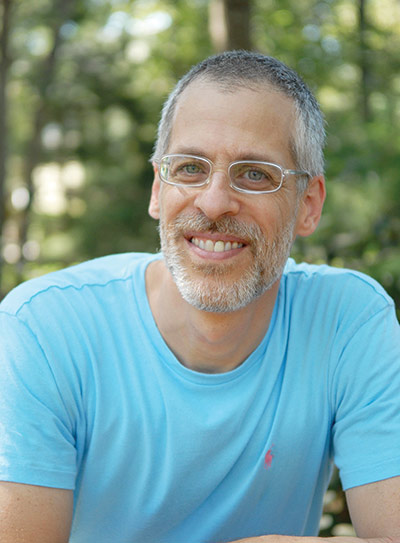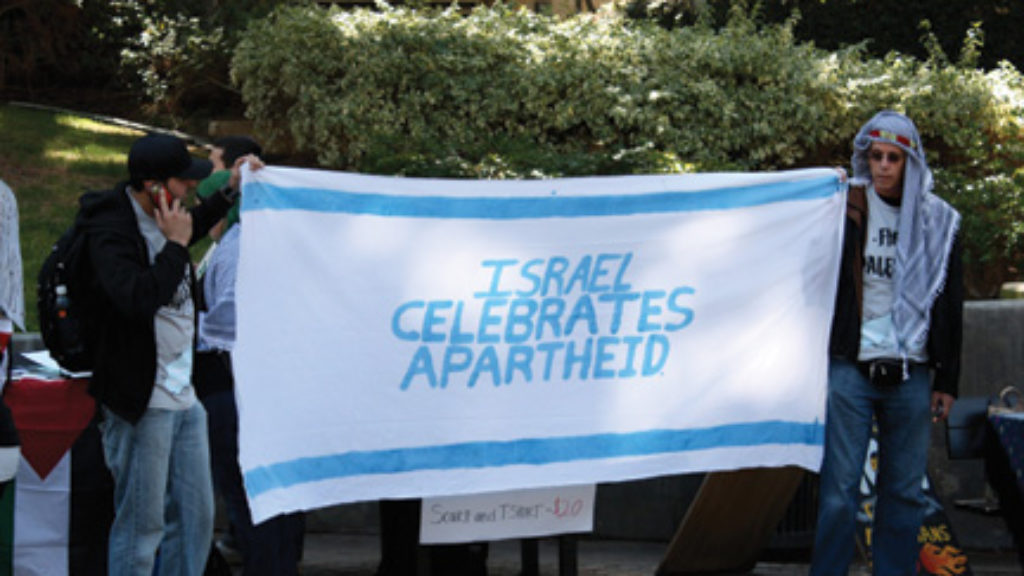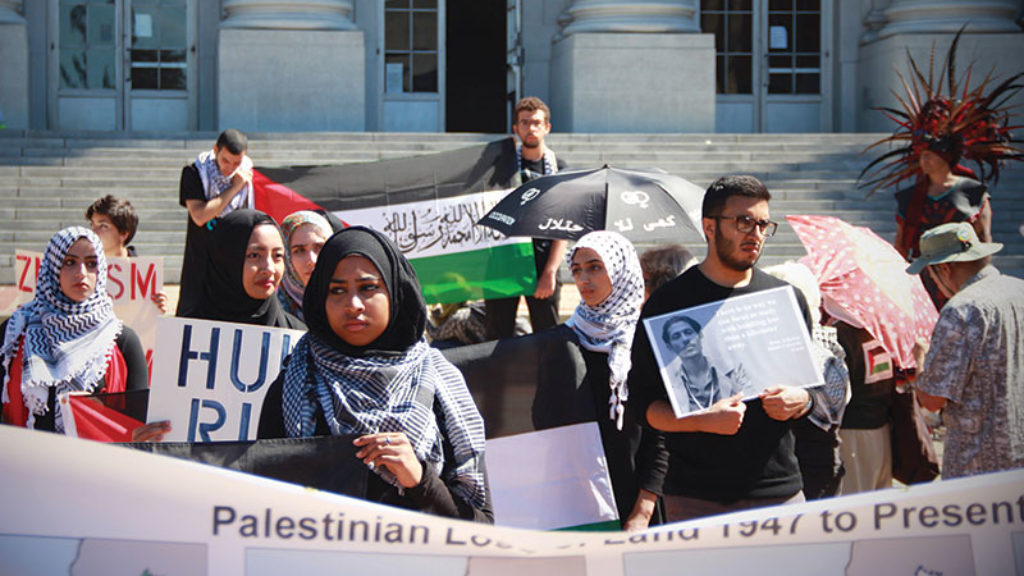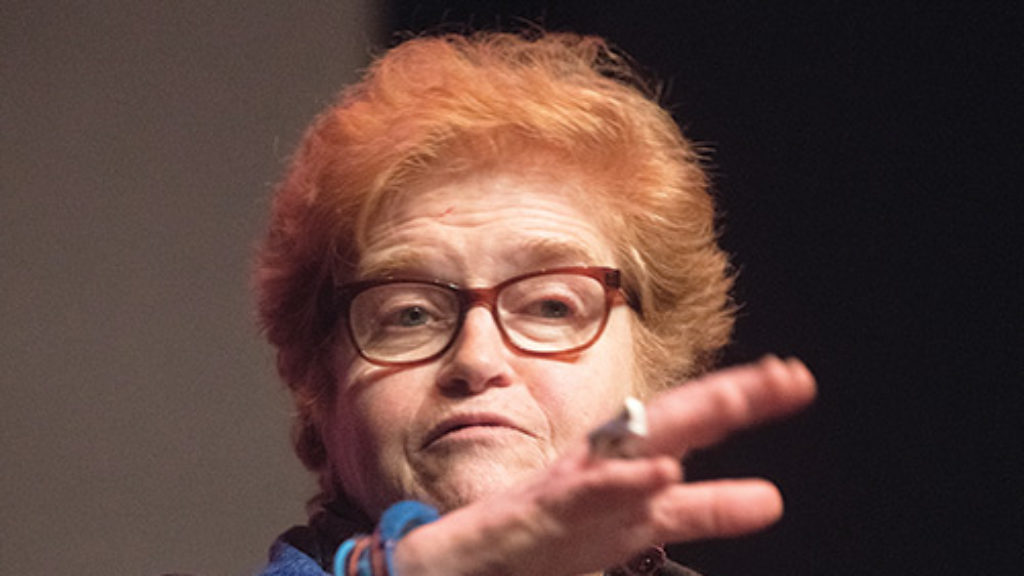“We Found Our Outrage”
On March 2, 2015, a handful of campus activists announced
that Andrew Pessin was an anti-Palestinian bigot. “I feel unsafe,” wrote Lamiya
Khandaker, the student chair of diversity and equity at Connecticut College,
lighting the spark. For Pessin, a professor of philosophy and the only
outspoken defender of
Israel on faculty, it was just the beginning of the destruction of his
reputation. On cue, the campus leapt into action with emails, statements, and
open forums in which Pessin was made the embodiment of all hate in the
community.
It came at a bad time for Pessin. His wife was seriously ill, and a gas leak had blown up his house a few weeks earlier. He had had to flee carrying his young children. His colleagues knew all this but jumped on the pile anyway. Forty-one of the school’s departments, centers, and programs denounced him, usually condemning his “speech filled with bigotry and hate.” Connecticut College proudly displayed these earnest statements on its website for months. At the end of the year, the school gave Khandaker an award for her activism. Pessin, by contrast, would receive enough death threats from the Islamic world that he notified the FBI. Chased off campus midsemester, it would be two years before he returned.

It all began in January 2015, when Pessin asked, “How do we tolerate cultures of intolerance?” at a panel discussion about the Charlie Hebdo terrorist attack. This was “problematic,” he was told in an email from Khandaker. So, too, was emphasizing Islamic antisemitism, even though Pessin brought it up only after he had been asked about it. Khandaker’s email also included a shot at Israel for hate attacks on Palestinians and its alleged sterilization of Ethiopian women. Jews do bad things too, didn’t he know? Pessin pushed back, disputing the sterilization libel, but searched politely for common ground.
The next month Khandaker again confronted Pessin by email, this time about a Facebook post he had written the previous year, during Israel’s war with Gaza. It was “repulsive” and “dehumanize[d] actual human beings,” she charged. Pessin’s post is worth quoting in full:
I’m sure someone could make a cartoon of this, but one image which essentializes the current situation in Gaza might be this. You’ve got a rabid pit bull chained in a cage, regularly making mass efforts to escape. The owner, naturally keeps the thing in the cage, but being kind-hearted or something, regularly feeds it, waters it, takes care of its health needs, etc. But liberal hearted world is outraged at the cruelty of keeping it in the cage, keeps pressuring the owner to let it out. Every so often the man relents under pressure, opens the cage a crack, and the pit bull comes roaring bounding out, snarling, going for the throat. A short battle ensues, the pit bull gets put back in . . . and almost immediately liberal world pressure starts complaining about the cruelty to animals and insisting he open the cage.
Gaza is the cage because of its repeated efforts to destroy Israel and the Jews. (1990s suicide buses anyone? how quickly we forget.) The blockade is not the cause of the current conflict. It is the RESULT of the conflict and cannot retroactively become its cause. The same is true of Judea and Samaria, the result of the Arab enmity toward Israel and not its cause. Anyone who fails to recognize that clear and obvious fact is demanding the release of a rabid pit bull. You may call for this release because you are yourself are a rabid pit bull protesting your co-specimen’s detention, or because you are a well-meaning liberal hearted animal rights person. But you are demanding the same thing. (And I wonder how heartily you’d demand this if the rabid pit bull was to be released in YOUR neighborhood.)
Khandaker told Pessin she didn’t want to hear his response. Regardless of how he justified his views, they were “racist, prejudice [sic] and hateful.”
“I take your concerns very seriously,” Pessin responded. “But in that same spirit of open discussion I must say I find it rather unfair that you make such strong claims about my remarks . . . then tell me that you are not interested in any reply that I might make.” He explained his post’s meaning:
It is specifically about Hamas and the Israeli blockade in the context of last summer’s war, and it is a serious misrepresentation to suggest that “it refers to Palestinians in Gaza as ‘rabid (pit) bulls.’” (If my analogy inadvertently invites that overly literal misunderstanding, then I am truly sorry and surely need to be more careful, and I’ve taken the post down to think about whether it does; and I appreciate your calling attention to that fact; but either way, it is a serious misunderstanding.)
In his new book in defense of Pessin, Salem on the Thames: Moral Panic, Anti-Zionism, and the Triumph of Hate Speech at Connecticut College, Richard Landes writes, “This probably should have been the end of the episode: a misunderstanding about a written comment, a clarification of original intent, an apology for intended offense, and a deletion of the offending post.” But Landes, a professor of medieval history at Boston University with a side gig keeping the anti-Israel intelligentsia honest, knows that Pessin wasn’t dealing with good-faith interlocutors. Before Pessin had a chance to respond, Khandaker had already emailed a friend: “wtf he literally just dehumanized the f— out of human beings. . . . This man needs to go.” Meanwhile, religious studies professor Sufia Uddin was planning a campaign of “public shaming,” she told an unnamed colleague.
Salem on the Thames is a collection of essays, but most of them, including a very helpful annotated chronology of events, are by Landes, who has also compiled an extensive archive of primary-source documents at his blog. He and his other contributors dissect each and every way Pessin was sucker punched, lied to, manipulated, and thrown under the bus.

The sucker punch connected when, without warning, the student newspaper published three letters attacking Pessin simultaneously. One letter, written by two students of Arabic studies, spliced quotations from the Facebook post’s comments to accuse him of calling for genocide: “Professor Pessin directly condoned the extermination of a people.” Khandaker claimed in her letter that Pessin had sloughed off her concerns, even though it was she who had rudely dismissed Pessin. She also insisted his post referred to Palestinians in general as rabid dogs, raised the specter of Islamophobic violence, and cited his other comments about Islamic extremism and intolerance—in short, his liberalism—as evidence of consistent bigotry.
Did Pessin write anything wrong in his post? In one sense, perhaps it doesn’t matter. Wilfred Reilly’s research on hate-crime hoaxes has shown that where no racism is forthcoming, many activists will fabricate it. They know that lectures on structural racism aren’t enough; enemies are needed to spur radical action. On US campuses, “the demand for bigots exceeds the supply,” Reilly has said. Still, the truth should guide our judgments. We owe it to Pessin to search for it.
Landes has no doubt the post was exclusively about Hamas. At some points he accuses all misreaders of deliberate distortion or worse, but elsewhere he makes a more fitting claim: Although readers “may not be blameworthy for initially misreading the text out-of-context, they should be held accountable for acting on the misreading . . . without the most elementary exegetical diligence expected of a community of scholars.”
“Gaza is in the cage,” Pessin writes in his post; blockaded by Israel, Gaza was the dog. The problem with this post is that Pessin equivocates on the meaning of “Gaza.” At one point, it refers to the inhabitants: These are people whom he says Israel “feeds” and “takes care of” and whom bleeding-heart liberals want to be let out. But when the cage is opened, “Gaza” becomes Hamas, its regime, which springs to attack. This latter usage is standard practice; for instance, journalists write “Beijing” as shorthand for the Chinese government. That Pessin meant Hamas in some parts of the post is made clear by his reference to the terror group’s suicide bombings on buses in the 1990s and by the exchange underneath the post, in which Pessin agrees with a friend’s comment that “terrorists should be put down as well, just like the dog.” Pessin’s critics called the exchange genocidal.
For this equivocation between Gaza’s inhabitants and the terror organization that rules them, one can fault Pessin, but the problem is written into the conflict itself. There is no way to let Gazans who deserve sympathy out of the blockade without letting Hamas take a run at Israel’s throat.
Activists at Connecticut College projected an extreme understanding of the conflict—the racist Israelis cage the poor Gazans whom they perceive as rabid animals—onto Pessin and his analogy. Khandaker confirmed this when, during a group meeting, she waved a stack of papers at Pessin and said, “I’ve printed out everything you’ve written, your Facebook posts, your Huffington Post articles, I know who you are.” Those posts and articles, still accessible, are merely pro-Israel. But for Khandaker and her student allies and faculty mentors, the pro-Israel viewpoint itself is evidence of bigotry.
As Landes makes crystal clear, the context vindicates Pessin. His offending post was one of 17 that he wrote between July 23 and August 11, during the 2014 Gaza war, and all of the other 16 were explicitly about Hamas. Many of these criticized Hamas for using human shields and emphasized the distinction between terrorists and regular Palestinians. A careful examination of text and context, the sort of thing that liberal arts colleges are supposed to teach, must conclude that Pessin meant to speak harshly only about Hamas.
But even that was objectionable to Pessin’s colleagues. A fellow philosophy professor insisted, “Comparing people to animals is really problematic in any context.” This was also the fallback position of the student activists’ petition: “Regardless of whom the professor is addressing here, he is indisputably dehumanizing them. Dehumanization is a tool of racism.” Even Katherine Bergeron, the college president, objected in a speech to the “vehemence” of the image in Pessin’s analogy. But, of course, she really only objected to a certain kind of vehemence. “Certainly, the philosophy department would not protest, ‘How dare you demean and devalue the Nazis!’” writes Landes. It is indicative of the prevailing moral confusion that a university president would tut-tut a defender of a free society for his vehemence in opposing a genocidal terrorist group.
The language of “hate” and “hurt” was hegemonic on the Connecticut College campus, leaving room only for condemnatory and therapeutic bromides, not reasoned argument. Nearly everyone Pessin spoke to warned him not to dispute the activists’ libel. A philosophy department colleague who had told Pessin his explanation was “a fair way to frame things,” and then six hours later issued a public condemnation, explained away his betrayal by relating that a student had cried about the Facebook post in his office. “The mere fact that students are hurting,” he wrote to Pessin, “I think means that there is a problem with inclusivity.” He cried, therefore you’re wrong, reasoned the philosopher. “If you say that they are misreading you,” Dean of Faculty Abigail Van Slyck told him, “you will just anger them more, by blaming them for being offended.”
Pessin didn’t know what to do. By all accounts, he is a good-natured, charming, and even quirky guy, well liked by his students. (His appearances on the Late Show with David Letterman as the genius in the skit “The Strong Guy, the Fat Guy, and the Genius” in the 1990s, all accessible on YouTube, couldn’t have hurt.) Not your usual academic, he found success writing philosophy books for a general audience, such as The 60-Second Philosopher: Expand Your Mind on a Minute or So a Day! and even wrote novels under a pen name. Perhaps because of his good nature, he was slow to realize the nature of the attack on him, retaining a philosopher’s faith that reason would triumph. Over and over, he cited textual evidence to prove that he hadn’t said anything bigoted. By the time he realized that the campus’s moral panic had rendered truth irrelevant, it was too late.
Connecticut College’s progressive leaders, Landes observes, treated their activists like pit bulls: Anything but appeasement was a provocation. Indeed, some professors, especially those without tenure, felt pressured to join the chorus of condemnation. Two professors who did express reservations were reported by Uddin, the religious studies professor, to the dean, who promptly gave them a talking-to.
A Jewish professor felt the need to make clear that “Prof. Pessin’s Facebook post does not speak for the Philosophy Dept., the Hillel community, or ‘the Jews.’” He worried about “collateral damage” to the Jewish community. One wishes it were surprising that, according to Jewish students, the Hillel faculty adviser discouraged them—sha, shtil—from publishing a statement of support for Pessin. In March 2015, Hillel issued its own statement condemning racism and offering kind words for the student activists.
The other “community statements” are appalling in their near-verbatim repetition of cowardly phrasing: “In response to the many events that transpired on campus prior to and during spring break regarding a Facebook post by a member of our faculty,” our department “would like to clearly state that we do not condone speech filled with bigotry and hate particularly when that speech uses dehumanizing language and incites or celebrates violence and brutality.” One by one, the departments recited this mantra. Even Pessin’s closest friends hummed the tune. If his post had left a rupture in the community, as everyone insisted, then these denunciations restored unity by ritually casting Pessin out. If, for the student protesters, it was a decontamination, an attempt to politically purify the college, for much of the faculty, it was a scapegoating, a necessary sacrifice. Shamelessly, many professors claimed then and afterward that the statements had nothing to do with Pessin. They said they were simply announcing their opposition to hate speech and dehumanizing language in general, apropos of nothing.
Things only intensified after a racist grunt, “No N—,” was found scrawled on a bathroom stall one month into the controversy. President Bergeron quickly canceled classes for a full day and summoned the community to discuss the hatred that plagued it. Such was the leadership at Connecticut College that “someone with a Magic Marker had been granted the power to shut down the college,” writes Landes. (The graffiti was likely written by a local man, with no connection to the college, who was later caught writing similar things off campus.) In an email to the entire school, Bergeron discussed Pessin’s post and the graffiti slur before summing up: “I will not tolerate forms of racist or hateful speech designed to demean, denigrate, or dehumanize.” This wasn’t direct enough for the editor of the student paper, who wrote that the lack of an official school condemnation of Pessin had “opened the door for white supremacy to come back.”
“These ‘emergencies,’” Landes
explains, “establish a traumatic crisis that demands ‘protection’ for those
afflicted by the alleged hate speech.” Follow what happens here. The activists
use the rhetoric of psychology to inflate offended feelings into real harm: If
what you said has traumatized students of color, then your words become
a threat to their safety, and surely the college must restrain you. To set off
a moral emergency, in which illiberal feelings must be indulged, campus
activists need only
discover—or manufacture—a monster in their midst. College administrators will
come running.
Connecticut College later told concerned alumni that the school had gone out on a limb in resisting demands to officially condemn Pessin. Meanwhile, President Bergeron had criticized Pessin and endorsed the activists’ interpretation in public before she even read beyond his post’s first paragraph, as Pessin discovered in meeting with her. Even as protesters chanted “F— you, Bergeron!” she pledged solidarity with them. Dean Abigail Van Slyck refused to dismiss a bogus bias complaint, leading Pessin to fear for his job and agree not to defend himself but to publish an apology, which activists construed as an admission of guilt. Most predictably, Bergeron tried to appease the activists by appointing three new “Deans of Equity and Inclusion,” professors from the critical race studies department. They quickly scheduled three radical and unscholarly anti-Israel events.
Connecticut College buckled. It allowed activists to chase Pessin off campus, intimidate dissenters, and gain new powers to indoctrinate their classmates. Their advance was stopped only by outside pressure, which materialized after George Mason University law professor David Bernstein, one of the few heroes of the story, exposed the
college’s disgraceful treatment of Pessin in a series of articles for a leading legal blog, published at the time by the Washington Post. Once some air escaped from the campus bubble, the whole thing began to collapse.
And yet Pessin remained on leave. Was he not allowed back? We don’t know. Certainly, the administration would not have wanted him to return, given the trouble it could cause with protesters and other faculty, perhaps provoking more media attention. Then again, Pessin had ample reason to keep his distance from colleagues who had betrayed him, students who were after him. How do you go back to a department meeting when everyone in the room has signed a public letter denouncing you? What’s more, the student petition circulated and continued to elicit threats against him. Whatever the reason, Pessin was granted an extended sabbatical, during which he stayed away from Connecticut College, wrote articles about anti-Israel politics on American campuses for the Algemeiner, and announced the publication of a new novel about the mysterious death of René Descartes—the assassination of a rationalist.
In fall 2017, Pessin quietly returned to Connecticut College and resumed teaching. At some point, he ceased cooperating with Landes’s book project. “I assumed he signed an agreement with his university that forbade him, some kind of non-disclosure agreement,” writes Landes. When I wrote Pessin that I was undertaking this review, he responded that he hadn’t seen the book and wasn’t sure he wanted to. He prefers to look forward. One senses it must still be painful, five years on, to look back.
The introduction to Salem on the Thames states the book is “dedicated to turning the Pessin Affair into a turning point.” Parts of it can help, including Landes’s emphasis on moral “inversion” and an essay by Ashley Thorne listing 15 elements of a “staged emergency.” John Gordon, a now-retired Connecticut College professor, contributes a colorful essay that reproduces the excellent dissenting email he wrote during the affair, when he was away on sabbatical. “This is a college,” Gordon told his faculty colleagues. “Not a nudist colony. (Not about pigmentation.) Not a Marxist cell. (Not about hewing to the party line.) Not a kindergarten (no telling on someone, running to the principal’s office, for using naughty words.)”
Unfortunately, Salem on the Thames won’t be the book to turn the tide. Its rhetorical excesses make it too easy to dismiss. The main problem comes with Landes’s “cogwar analysis,” which situates the Pessin Affair within the global jihadi effort to use the progressive left to win propaganda battles in a cognitive war. This sounds promising, but it gives Landes license to make statements far more irresponsible than anything Pessin ever wrote. Landes accuses six people, by name, of sympathizing with Hamas. He provides vague, difficult-to-decipher evidence for one of them, in a footnote, and no evidence for the rest. “At ConnColl,” Landes also writes, “Jihadis took over and allied with racial grievance.” Jihadis? Where? Then he claims, “The faculty in the Program in Global Islamic Studies served as the main players in this Jihadi cogwar campaign.” Is he calling Muslim American professors jihadis or useful idiots? It isn’t clear, but it ought to be.
The Pessin affair may not have been a “Jihadi cogwar campaign,” but it was a symptom of the self-regarding, anti-intellectual discourse that passes for political engagement at leading institutions of higher learning. One of the anti-Pessin letters to the Connecticut College paper lamented contemporary political apathy, contrasting its two student-authors’ generation with the Vietnam War protesters of the 1960s. But not to worry, they wrote. “On Wednesday February 25th,” when they learned of Pessin’s Facebook post, “we found our outrage.” Later, the student author of the anti-Pessin petition reflected on campus activism: “A strategy of ‘adaptive resistance’ is called for—which is to say, anything goes. . . . We do whatever we need to do to further the cause of social justice and equity. No holds barred.” But a Facebook post isn’t the Vietnam War. Rebels in search of a cause, their radicalism was kitsch—“vicarious experience and faked sensations,” in Clement Greenberg’s famous definition. It was only cute until someone got hurt.
I decided to take a look at Lamiya Khandaker’s Facebook profile, as she and fellow activists did to Pessin. I found a few defenses of Rep. Ilhan Omar’s comment about the American Israel Public Affairs Committee buying off Congress but also something more surprising. Something so hypocritical it took my breath away. On May 7, 2019, Khandaker shared a graphic of the casualties from “Israel’s war on Gaza” and wrote the following comment: “Blame Hamas all you want, but numbers don’t lie. Our politicians are despicable dogs” (emphasis is mine).This from the woman who attempted to destroy a professor’s life for using almost the same “dehumanizing” language. Turns out, it’s just standard heated political rhetoric, which she favors herself. The whole thing was a ploy, a cheap appeal to liberal compassion that works if you belong to a favored group and your opponent, a Jew, does not.
Andrew Pessin wasn’t “caught in the machinery,” as a colleague later reflected. He was ambushed. Then, indulging the feelings of the ambushers, the teachers and leaders of Connecticut College held Pessin down for a beating. They called it a “healing” process.
Comments
You must log in to comment Log In
Suggested Reading

Climate of Opinion
Academic scholars, of all people, should recognize that excoriation is not an acceptable substitute for argument, but, in fact, it pervades much of the discourse that today passes as “criticism of Israel.”

In My Country There Is Problem
Through this new book we get a disturbing picture of how students and faculty in the self-proclaimed progressive movement have demonized and marginalized Israel, its advocates, and anyone who wishes to genuinely learn about the Jewish State.
The Closing of the American Mind Now
Thirty years ago, a book was published that hit, in the words of the New York Times, “with the approximate force and effect of what electric shock-therapy must be like.” How has it held up? And what does that have to do with the Bible?

The Fire Now
"As horrific as the Holocaust was, it is firmly in the past. . . . Though I remain horrified by what happened, it is history. Contemporary antisemitism is not. It is about the present. It is what many people are doing, saying, and facing now," writes Deborah Lipstadt in her latest book.
Richard Landes
I agree with Elliot Kaufman that my word-choice was wrong. These are not jihadis we're dealing with. At the time I wrote the article reprinted in the book, I had not yet found the right term. Since then I published an article on what I think is the proper terminology.
I define Caliphaters as triumphalist Muslims who believe that they live in the generation that will usher in a world-salvific global Caliphate in which everyone alive is either a Muslim or a Dhimmi. As such, it is an apocalyptic millennial movement (ie one who believes their version of heaven on earth is imminently to be realized), and has believers of a wide range of intensities and behaviors.
Jihadis are the most impatient and violent (like those who carried out the Charlie Hebdo or Bataclan massacres). Da'wa caliphaters, on the other hand, work through more transformative ways (the cognitive war), often telling infidels frightened by Jihadis how to avoid getting targeted by adopting a proleptic dhimmitude. The Muslim antagonists at ConnColl were Da'wa Caliphaters, not Jihadis. I should have amended the article before republication.
In any case, I thank the reviewer for his careful reading.
http://www.theaugeanstables.com/2019/09/18/caliphaters-a-21st-century-millennial-movement/
http://www.tabletmag.com/jewish-news-and-politics/197151/triumphalist-religiosity